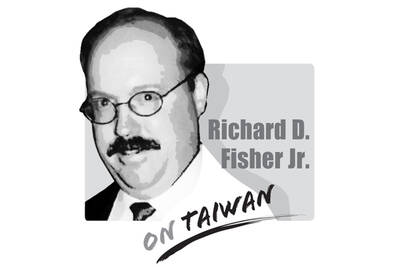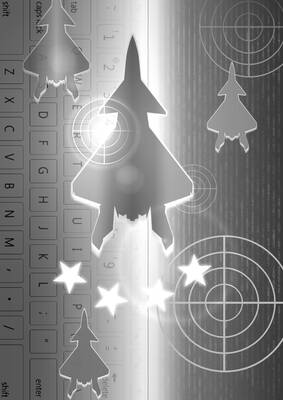Taiwan is one of very few countries about which it can be said that it faces a threat to its survival. Given this, decisionmakers should ensure that resources and energy are properly channeled to meet any challenge head-on. Unfortunately, that is not always the case.
Israel’s situation is analogous to Taiwan’s: Both are threatened by an external enemy bent on denying them the right to exist and which have shown determination to use force to achieve that end. Granted, the analogy only goes this far, as the dynamics of power in the two conflicts differ markedly. In Taiwan’s case, it is the weaker party in the struggle, while Israel in its struggle has the upper hand militarily and is an occupying force, which generates a whole new set of grievances.
That being said, the threat facing Israel is no less serious and its gravity has served as a rallying force for its people. There are undeniably serious differences of opinion inside Israel about how to deal with the challenges created by the Palestinians’ right to self-determination or attacks against Israelis by groups like Hamas and the Palestinian Islamic Jihad. Israel’s democratic way of life has helped bring those differences into contrast. However, all Israelis, from those who support the use of force to resolve the conflict to those who regard the occupation as the main cause of the conflict, agree on the need to do what is necessary to ensure the survival of their nation.
This is an example that Taiwanese appear unwilling to follow. This can perhaps be explained by the fact that violence against Taiwan, apart from the 1995-1996 Missile Crisis, remains abstract, despite its formidable military foe across the Taiwan Strait. Consequently, the green-blue political schism continues to fracture the nation, a situation that bears great dangers when facing an external enemy. Aside from fostering disunity, the endless domestic battles over electricity price increases and imports of US beef, for example, take the government’s and political parties’ focus and resources away from productive issues.
Fueling this is the view, held by a number of people in the pan-green camp, that President Ma Ying-jeou (馬英九) and the Chinese Nationalist Party (KMT) are trying to “sell” Taiwan to China, a contention that holds little water once one has made the effort to actually talk with KMT members, their supporters and civil servants.
Despite all his flaws, Ma is not a dictator and could not be one even if he wanted to. He is part of a government, and Taiwan’s democratic system, flaws notwithstanding, imposes checks and balances on what he and his administration can do. The KMT has flouted democratic rules on a number of issues in the past four years, but it is hard to imagine it could get away with using “authoritarian” means to alter the fundamentals of Taiwan. Not even those who gave Ma a second mandate in January would allow him to do so.
Rather than launch attacks on what is regarded as the “proximate” enemy, the pan-green camp would be far more effective if it sought to establish constructive relationships with officials in the pan-blue camp who have the same democratic values and pride in Taiwan as they do, in an effort to focus on the one external force that can truly dissolve the nation: China.
There are potentially large, untapped resources in the pan-blue camp where the pan-green camp could make inroads if it tried. Such efforts would have far better chances of protecting the nation by presenting China with a united front, instead of spending nights in the legislature playing with furniture to prevent a vote on amendments on what are, in the end, mundane — and some would say inevitable — issues.
For Israelis, the threat is clear enough that they have little patience for clownish behavior in their parliament. Taiwanese are playing with fire if they think that their situation is any different.

As the Chinese Communist Party (CCP) and its People’s Liberation Army (PLA) reach the point of confidence that they can start and win a war to destroy the democratic culture on Taiwan, any future decision to do so may likely be directly affected by the CCP’s ability to promote wars on the Korean Peninsula, in Europe, or, as most recently, on the Indian subcontinent. It stands to reason that the Trump Administration’s success early on May 10 to convince India and Pakistan to deescalate their four-day conventional military conflict, assessed to be close to a nuclear weapons exchange, also served to
After India’s punitive precision strikes targeting what New Delhi called nine terrorist sites inside Pakistan, reactions poured in from governments around the world. The Ministry of Foreign Affairs (MOFA) issued a statement on May 10, opposing terrorism and expressing concern about the growing tensions between India and Pakistan. The statement noticeably expressed support for the Indian government’s right to maintain its national security and act against terrorists. The ministry said that it “works closely with democratic partners worldwide in staunch opposition to international terrorism” and expressed “firm support for all legitimate and necessary actions taken by the government of India

The recent aerial clash between Pakistan and India offers a glimpse of how China is narrowing the gap in military airpower with the US. It is a warning not just for Washington, but for Taipei, too. Claims from both sides remain contested, but a broader picture is emerging among experts who track China’s air force and fighter jet development: Beijing’s defense systems are growing increasingly credible. Pakistan said its deployment of Chinese-manufactured J-10C fighters downed multiple Indian aircraft, although New Delhi denies this. There are caveats: Even if Islamabad’s claims are accurate, Beijing’s equipment does not offer a direct comparison
To recalibrate its Cold War alliances, the US adopted its “one China policy,” a diplomatic compromise meant to engage with China and end the Vietnam War, but which left Taiwan in a state of permanent limbo. Half a century later, the costs of that policy are mounting. Taiwan remains a democratic, technologically advanced nation of 23 million people, yet it is denied membership in international organizations and stripped of diplomatic recognition. Meanwhile, the PRC has weaponized the “one China” narrative to claim sovereignty over Taiwan, label the Taiwan Strait as its “internal waters” and threaten international shipping routes that carry more